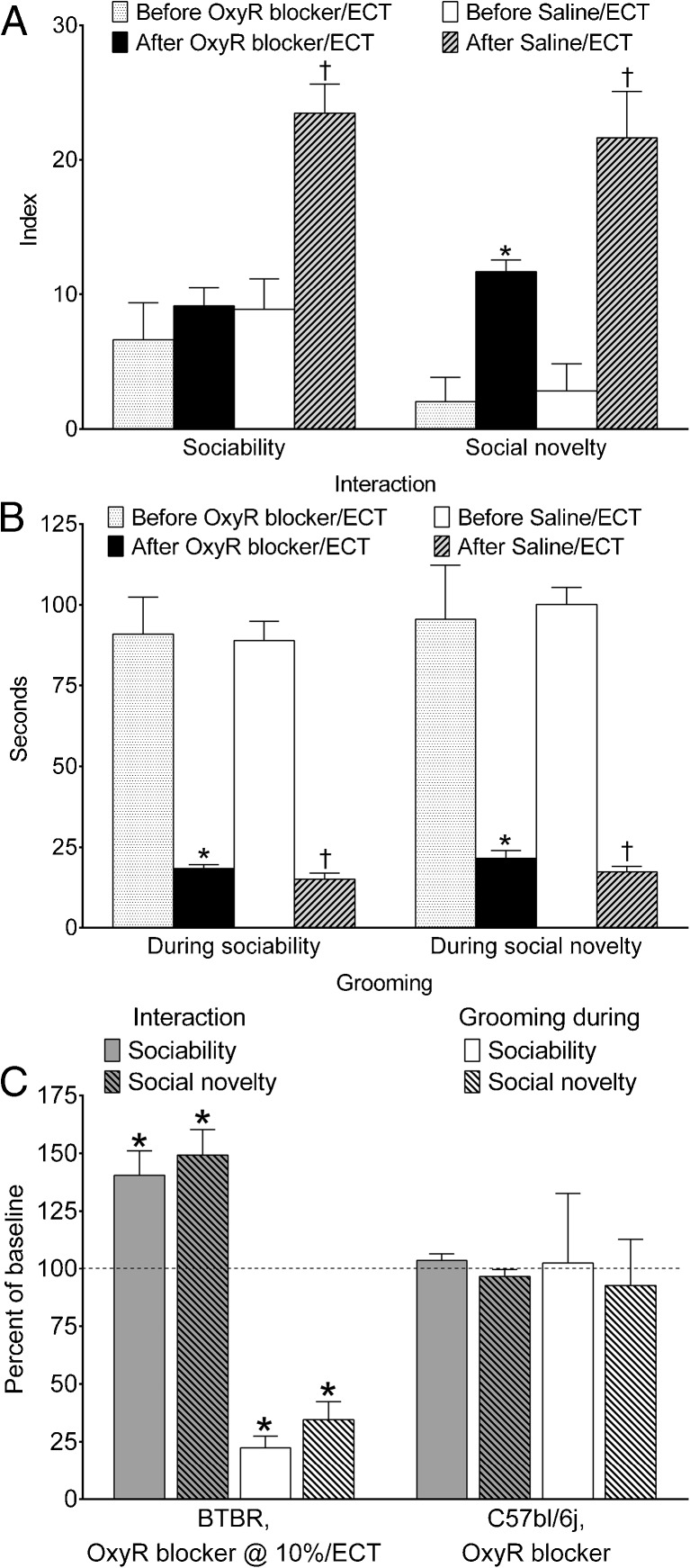Fig. 3.
Effects of co-administration of electroconvulsive therapy (ECT) with oxytocin receptor blocker (2S)-2-Amino-N-[(1S,2S,4R)-7,7-dimethyl-1-[[[4-(2-methylphenyl)-1-piperazinyl]sulfonyl]methyl]bicyclo[2.2.1]hept-2-yl]-4-(methylsulfonyl)butanamide hydrochloride (L-368,899) on behavioral deficits in BTBR mice. (a) Treatment with an oxytocin receptor blocker (OxyR blocker), L-368,899, prevented ECT-induced improvement of sociability. Under OxyR blocker ECT still improved social novelty; however, this effect was not as pronounced as when ECT was administered in the presence of saline in lieu of L-368-899 (After Saline/ECT vs After OxyR blocker ECT; p < 0.05, Student's t test). (b) Even in the presence of OxyR blocker, ECT fully reversed increased grooming behavior in BTBR mice. OxyR blocker n = 7; saline n = 5. Data are presented as mean ± SEM. *p < 0.05 “After OxyR blocker/ECT” vs “Before OxyR blocker/ECT; † p < 0.05 “After Saline/ECT” vs “Before Saline/ECT” (paired t tests). (c) The administration of OxyR blocker at 3.5 μg/day (i.e., 10 % of the effective dose) had no effects on therapeutic effects of ECT (n = 5). When administered to C57Bl mice (n = 6), OxyR blocker showed no proper effects on behavior. *p < 0.05 when comparing data after treatments with data before treatments (paired t test). Data are presented as mean ± SEM per cent of parameters before respective treatments (baseline); for sociability and social novelty, data are normalized on the –50 to +50 scale by adding 50 to absolute index values (so as to avoid negative per cent). For statistical analysis, absolute values were compared

